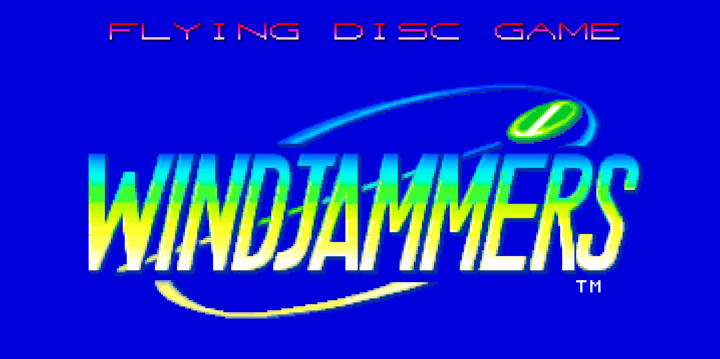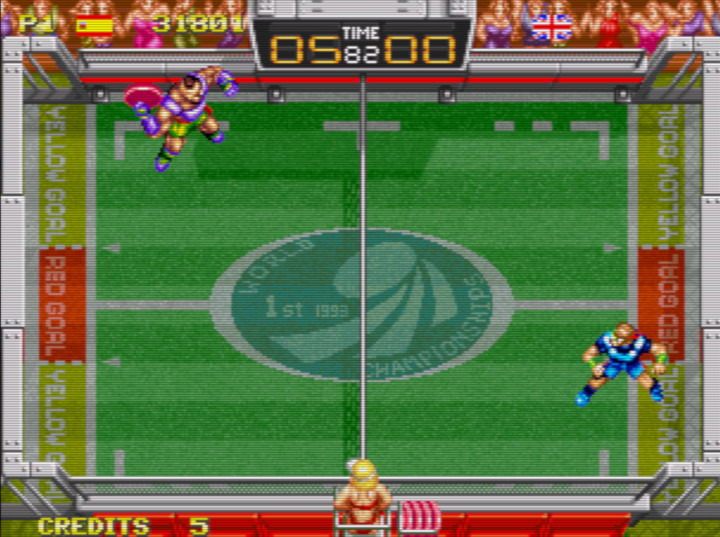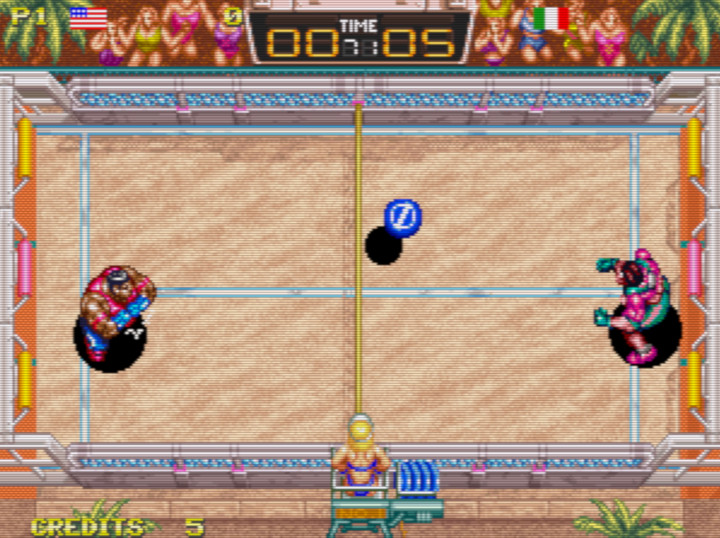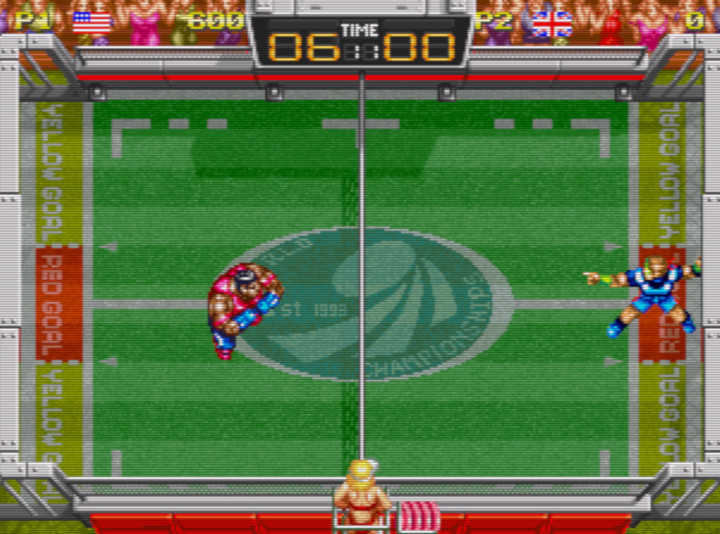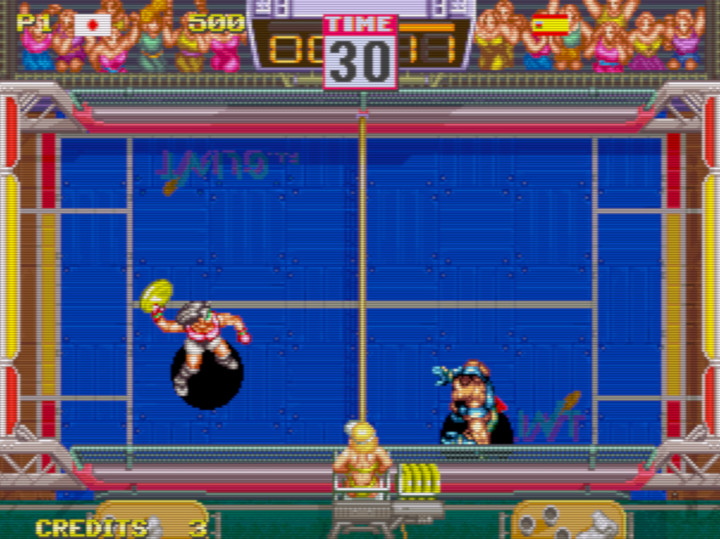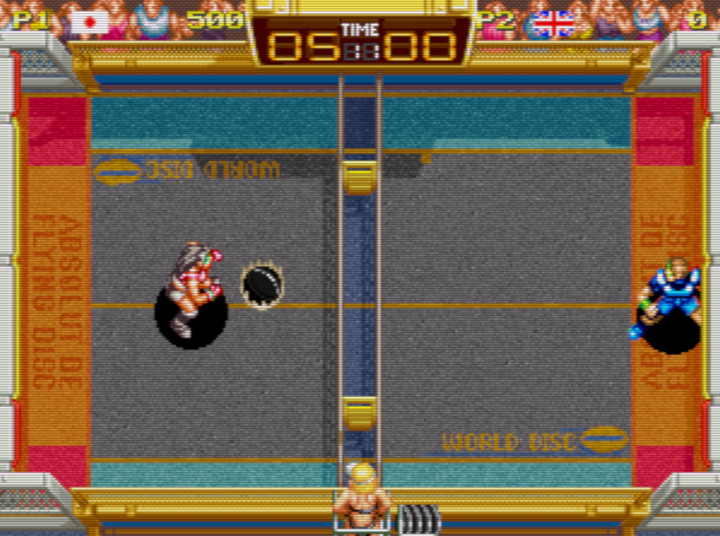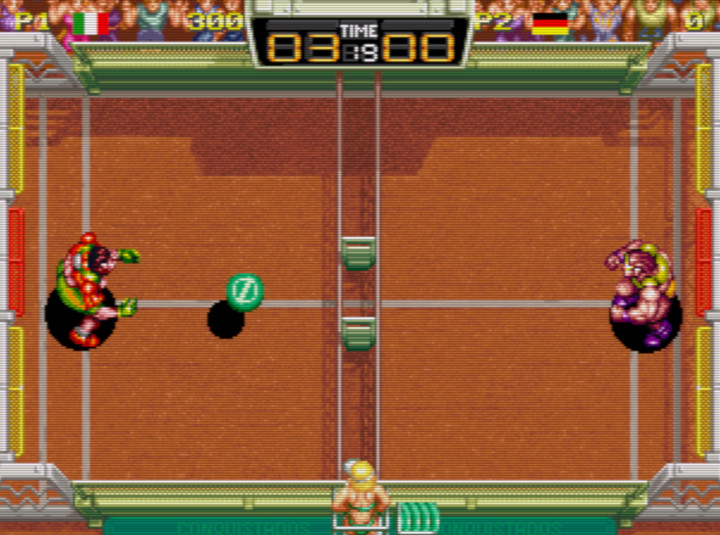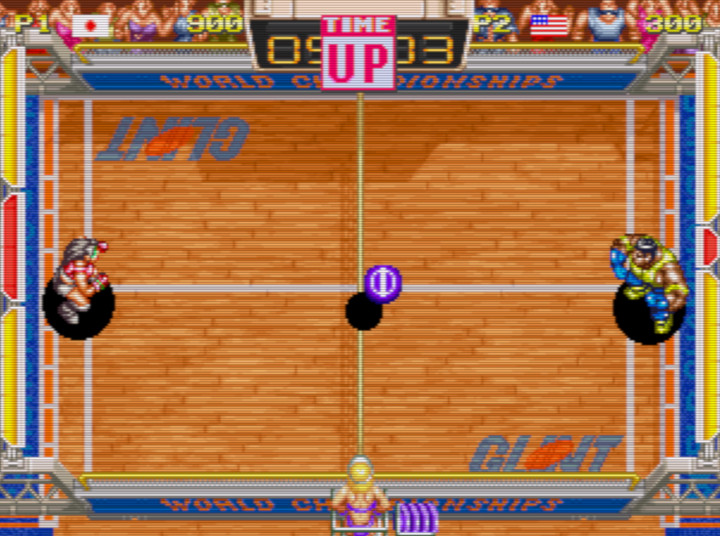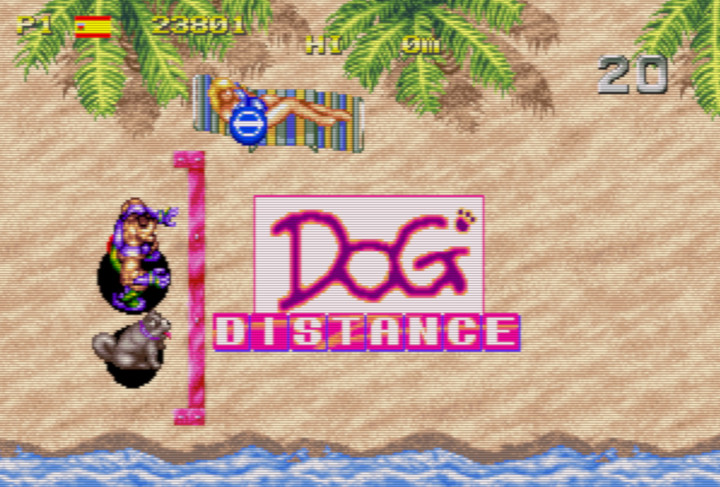Windjammers Is a Neo Geo Masterpiece That Won’t Soon Be Forgotten
If I were to pick a “Golden Age” of sports video games, I would probably have to go with the early 1990s. This was a glorious era of those super arcadey hits like Jerry Glanville’s Pigskin Footbrawl (1992), NBA Jam (1993), and Mutant League Football (1993). Those titles were intentionally over-the-top, but even your more straight-laced sports games felt pretty arcadey due to the limitations of the hardware, resulting in great sports titles like NHL ’94 (1993) and Techmo Super Bowl II: Special Edition (1994). These are games that are still a blast to play to this day.
Windjammers is a sports game from this specific era that gets left out of the conversation, but I really do think that’s changing. The game has been building a massive cult following, so much that it’s actually getting a sequel almost 30 years after its launch.
Windjammers originally released for Neo Geo in 1994. For those unfamiliar with Neo Geo, it’s important to note that there are two main lines of Neo Geo games. Neo Geo MVS (Multi Video System) refers to the arcade cabinet, which actually had cartridge slots in it so games could be swapped out like a home console. I’ve seen cabinets with both six cartridge slots and four, so you can have multiple games slotted at once (hence the M for Multi). Then there’s Neo Geo AES (Advanced Entertainment System), which refers to the Neo Geo home console. As far as I can tell, Windjammers released for both in 1994.
Now, it’s hard to explain the appeal of this game, because in concept, it’s really just Pong with some upgrades for the gaming audience of the 1990s. Developed and published by the oh-so-quirky Data East, Windjammers places you on a court with a tennis-style net and two soccer-style goals. You toss a frisbee with the hopes of making it into the opponent’s goal, while that opponent tries to stop it, then fling it back at you with hopes of instead landing it inside your goal.
The goal is divided into a red section and a yellow section. If you get the frisbee into the yellow section of your opponent’s goal, you’ll earn three points. But if you can get it into the red zone, you’ll score five points. And if the frisbee lands on the ground on your side of the court, your opponent scores two points. Once one side racks up 12 points, the round is over, and you play two-out-of-three sets of matches.
One thing I should point out is that in the original versions of the game, the timer was set to 30 seconds per match, but if you pick this up on a modern consoles, you’ll notice that was adjusted to 99 seconds. The 99-second matches still go by pretty quickly, especially since it’s very likely one side will score the requisite 12 points to end the match before that minute-and-a-half timer expires.
There are six available characters in three categories. Beginner characters have a lot of speed but little power, Expert characters are slower but more powerful, and Medium characters are a nice midway point between the two. Here’s a full list:
Beginner
- Hiromi Mita from Japan
- Steve Miller from the U.K.
Medium
- Jordi Costa from Spain
- Loris Biaggi from Italy
Expert
- Gary Scott from the U.S.A.
- Klaus Wessel From Germany
Note that in modern ports of the game, the category titles have been changed to Light, Medium, and Heavy.
There are six different courts you’ll play on. While the differences are mostly aesthetic, there are also variations on the goal layouts (as far as which sections are yellow vs. red), and some courts feature bumpers in the middle.
Here’s a complete list, in case you want to see all of them:
Beach
Lawn
Tiled
Concrete
Clay
Stadium
It sounds simple, but there’s a super-addictive “one more game” quality to Windjammers, which I want to say is probably due to how it feels. The controls are tight and the action is fast, and since matches are over so quickly, the game is rarely ever going to feel like it’s dragging.
Plus, there are some slightly more complex mechanics to think about. For example, besides throwing the disc straight, you can ricochet it off walls and bumpers, or put a curve on your toss. You can even lob it up in the air to try to get it over your opponent. But lobbing a disc paints a target on the floor, and if your opponent can stand on that target, they’ll get to unleash a charged throw, which is a lot harder to block than a regular one.
On top of all this, there are minigames to play between matches. There’s Bowling, which is basically just a disc-golf version of regular bowling, and Dog Distance, which has you see how far you can toss the disc while it’s being chased by a dog. Neither of these minigames will keep you distracted for too long, and you’ll definitely find yourself wanting to get back to the main event by the time one of them finishes. Thankfully, they’re both super short, so neither wears out its welcome. Besides, it’s kind of fun to get to play with your dog for a bit.
Windjammers could have easily disappeared into obscurity, but it ended up building a following of competitive players. It landed on the Wii Virtual Console in Japan in 2010, but it was delisted by the end of 2013 due to licensing issues. Then, a modern port showed up in 2017 on the PS4 and PlayStation Vita, and it made it to Nintendo Switch a year later. The game also had a massive impact at the AnimEVO 2018 fighting game event.
So I’m certainly not the first person to sing the digital praises of Windjammers, and I won’t be the last. That said, this is a game that’s definitely worth paying attention to. With a sequel just around the corner, I’m sure there will be a lot of eyes on this franchise over the coming years.

